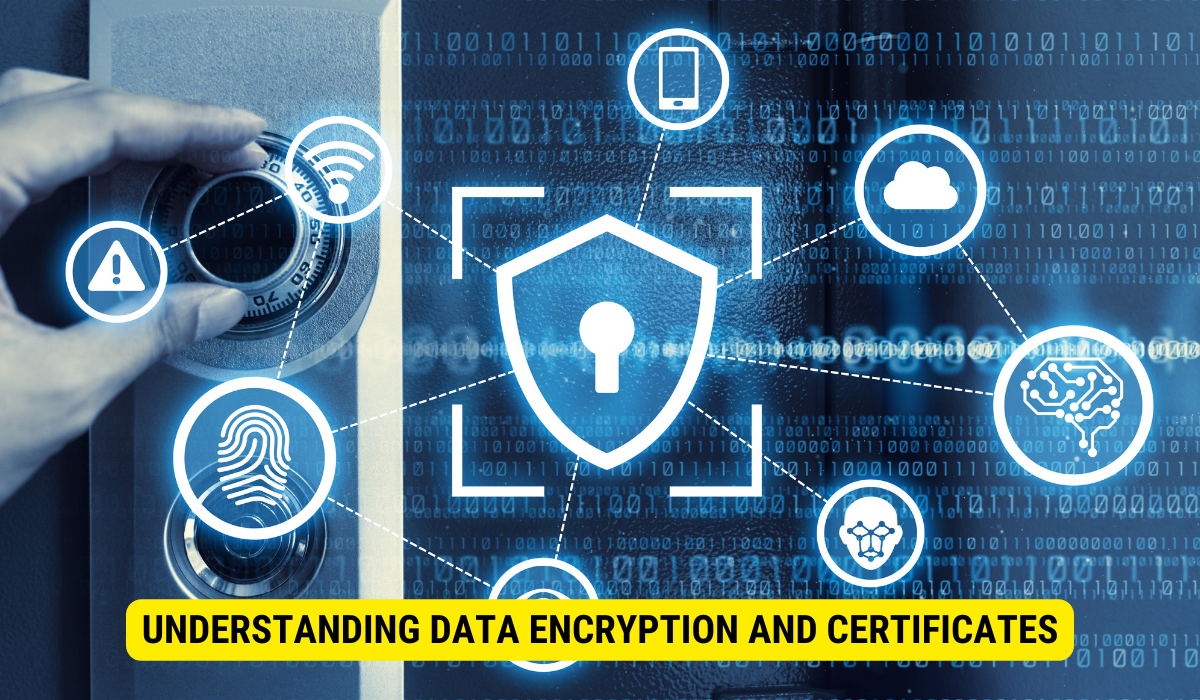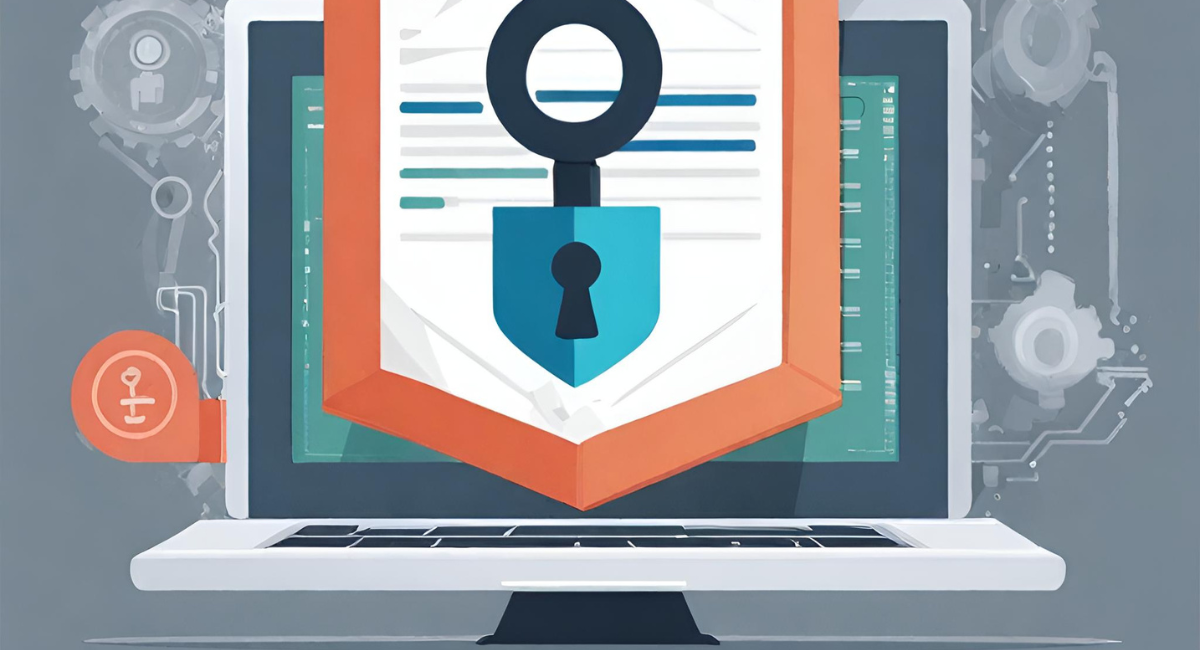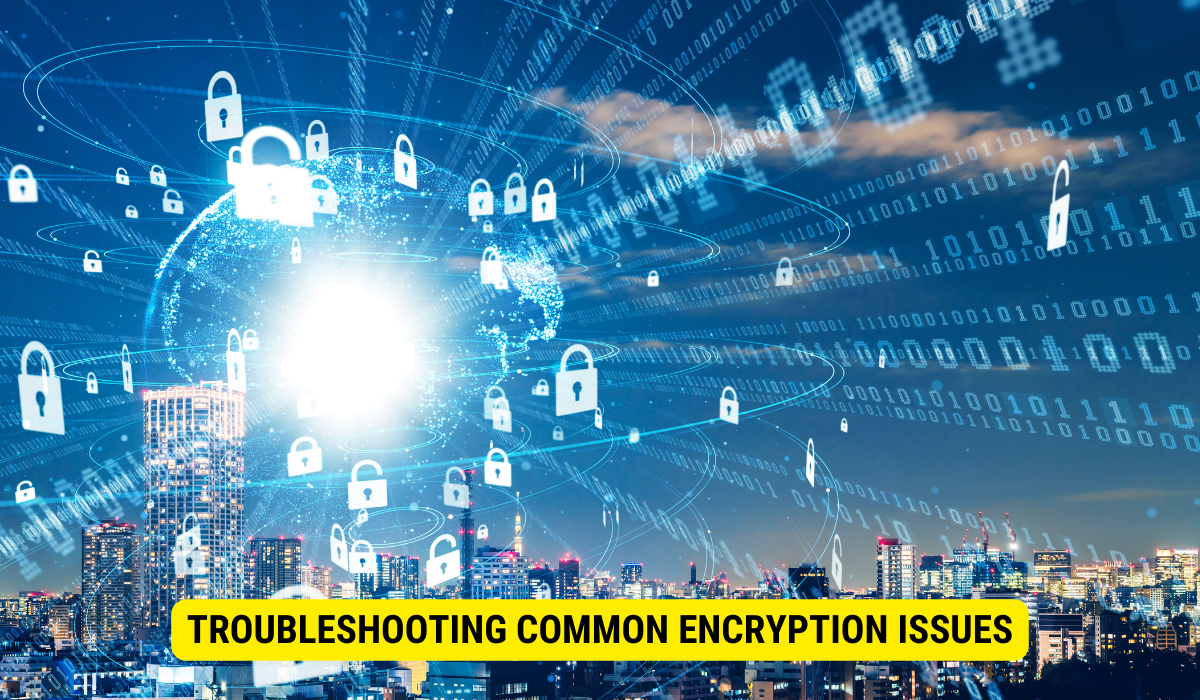Encrypting data certificates to an application involves using cryptographic algorithms and a unique key to convert plaintext data into ciphertext, ensuring its confidentiality. Certificates further authenticate and verify encrypted data’s integrity.
In today’s digital age, data security is of paramount importance. With cyber threats becoming increasingly sophisticated, businesses and individuals must proactively protect sensitive information. One effective way to secure data is through encryption, which involves converting plaintext into ciphertext to ensure confidentiality. Additionally, using certificates enhances security by verifying the authenticity and integrity of encrypted data. I will explore the process of encrypting data certificates to an application, providing you with the knowledge and tools necessary to safeguard your valuable information.
Understanding Data Encryption and Certificates

Data encryption is the process of encoding information so only authorized parties can access it. This is achieved by using cryptographic algorithms and a unique key. When data is encrypted, it is transformed into an unreadable form known as ciphertext. The recipient must possess the corresponding decryption key to decipher the ciphertext and retrieve the original plaintext. This ensures that even if the encrypted data falls into the wrong hands, it remains illegible without the proper key.
Let’s delve deeper into the world of data encryption. One commonly used encryption algorithm is the Advanced Encryption Standard (AES). AES is a symmetric encryption algorithm, denotation the alike key is used for encryption and decryption. It operates on blocks of data, typically 128 bits in size, and applies a series of mathematical operations to transform the plaintext into ciphertext.
Another widely used encryption algorithm is the Rivest-Shamir-Adleman (RSA) algorithm. Unlike AES, RSA is an asymmetric encryption algorithm that uses a couple Two types of keys are involved: a public key utilized for encryption and a private key used for decryption. The public key serves the purpose of encryption and is readily accessible shared with anyone, while the private key must be reserved secret. RSA relies on the mathematical difficulty of factoring large prime numbers to ensure the security of the encrypted data.
Let’s focus on certificates and their role in establishing trust and authenticity. Certificates are digital documents that bind a public key to a particular entity, such as an individual or organization. They serve as a form of identification and are issued by trusted third-party organizations called Certificate Authorities (CAs).
Certificate Establishments play a crucial role in the certificate issuance process. They verify the certificate holder’s identity through various means, such as conducting background checks and validating official documents. Once the identity is confirmed, the CA generates a certificate with the public key and other relevant information. This certificate is then digitally signed by the CA using its private key, creating a digital signature that anyone can verify using the CA’s public key.
By utilizing certificates, encrypted data can be securely transmitted and received. When a sender encrypts data using the recipient’s public key, they can be confident that only the intended recipient, who possesses the corresponding private key, can decrypt and access the information. Additionally, certificates ensure the integrity of the data, as any tampering or modification of the encrypted data will invalidate the digital signature attached to the certificate.
It’s worth noting that certificates are not limited to individuals and organizations. They can also be used to secure websites through SSL/TLS certificates. These certificates enable secure communication between a web server and a client, ensuring that sensitive info, such as login authorizations and credit card details, are encrypted during transmission.
In conclusion, data encryption and certificates are essential components of modern-day security. They provide a means to protect sensitive information from unauthorized access and establish trust in digital communications. By understanding the intricacies of encryption algorithms and the role of certificates, individuals, and organizations can take proactive steps to safeguard their data and ensure secure communication.
Preparing Your Application for Encryption
Before delving into encrypting data certificates, assessing your application’s security needs and selecting the appropriate encryption tools is essential. Begin by evaluating the sensitivity of the data you plan to encrypt. Consider factors such as the potential impact of a data breach and the legal requirements pertaining to your industry. This assessment will guide you in determining the level of encryption required to protect your data adequately.
When assessing the sensitivity of your data, it is important to consider the different types of information your application handles. For example, if your application deals with personally identifiable information (PII) such as names, addresses, and common security numbers, you may need to implement stronger encryption measures than applications that handle less sensitive data. Additionally, think about the potential consequences of a data breach. Would it result in financial loss, reputational damage, or legal repercussions? Understanding the potential impact will help you prioritize your encryption efforts.
Furthermore, being aware of the legal requirements that apply to your industry is crucial. Different sectors have specific regulations regarding data protection and encryption. For example, healthcare organizations must obey with the Health Insurance Portability and Accountability Act (HIPAA), which mandates encrypting electronic protected health information (ePHI). Similarly, financial institutions are subject to the Gramm-Leach-Bliley Act (GLBA), which requires the protection of customer financial information. Familiarize yourself with the relevant regulations to ensure your encryption efforts align with legal obligations.
Upon establishing your security needs, the next step is to choose the right encryption tools for your application. Various encryption algorithms and protocols are available, each with its own strengths and weaknesses. Research and compare different encryption options to ensure you select a method that aligns with your security requirements.
When evaluating encryption tools, consider factors such as encryption strength, performance impact, and ease of implementation. Some encryption algorithms, like Advanced Encryption Standard (AES), are widely recognized for their robust security. However, they may have a higher computational cost, which can impact the presentation of your application. On the other hand, lightweight encryption algorithms may offer faster encryption and decryption speeds but could be less secure. Finding the right balance among security and performance is crucial.
Additionally, consider the compatibility of the encryption tools with your application’s programming language and framework. Some encryption libraries are specifically designed for certain programming languages, while others offer cross-platform support. Ensure the encryption tools you choose integrate seamlessly with your existing codebase to minimize development effort and potential compatibility issues.
In conclusion, preparing your application for encryption involves thoroughly assessing your security needs and selecting appropriate encryption tools. By evaluating the sensitivity of your data, understanding the potential impact of a data breach, and considering legal requirements, you can determine the level of encryption required. Researching and comparing different encryption options while also considering compatibility with your application’s programming language and outline will help you make an knowledgeable decision. Taking these steps will ensure that your application’s data is adequately protected.
Steps to Encrypt Data Certificate to an Application
Now that you have prepared your encryption application let’s explore the steps required to encrypt data certificates effectively. Firstly, generate a certificate specific to your application. This entails creating a public-private key pair for your application and obtaining a certificate from a trusted CA. The certificate will bind your application’s public key to its identity, verifying that any information encrypted with its public key originates from your application.
With the certificate in hand, the next step is implementing encryption within your application’s codebase. This involves utilizing encryption algorithms and the appropriate cryptographic libraries to encrypt the sensitive data. Remember to securely store the private key associated with your application’s certificate. Safeguarding this key is vital to maintain the confidentiality and integrity of your encrypted data.
Managing Encrypted Data in Your Application

Properly managing encrypted data is crucial to ensure its long-term security. Regularly updating your encryption certificates is an essential maintenance task. Certificates have expiration dates, and using outdated certificates can compromise the security of your encrypted data. Stay vigilant and renew or replace certificates well before expiration to avoid any lapses in security. Additionally, periodically review your encryption protocols and algorithms, as advancements in technology may render certain encryption methods susceptible to vulnerabilities.
Moreover, be mindful of the integrity of your encrypted data. Consider implementing measures to detect and prevent tampering or unauthorized modifications. This can be achieved through secure hashing algorithms and digital signatures. Regularly verify the integrity of your encrypted data to maintain trust and confidence in its integrity.
Troubleshooting Common Encryption Issues

Despite meticulous preparation and implementation, encryption issues can still arise. It is essential to be prepared and know how to troubleshoot and address common problems. Encryption errors can occur due to misconfiguration, incorrect implementation, or compatibility issues. When encountering encryption errors, review your encryption code and configuration settings. Check for any inconsistencies or discrepancies that may be causing the issue. Additionally, consult documentation forums or seek assistance from security professionals to identify and resolve encryption errors.
In unfortunate situations where certificates are lost or corrupted, take immediate steps to recover them. This typically involves contacting the appropriate CA or certificate provider, providing any necessary documentation and proof of ownership, and following their established procedures for certificate recovery. Prompt action is crucial to minimize the disruption to your encrypted data and maintain the security of your application.
Key Takeaways
- Understanding Encryption: Encryption converts data into an unreadable form, protecting it from unauthorized access, while decryption retrieves the original data.
- Certificate’s Role: Certificates issued by trusted CAs authenticate and verify the integrity of encrypted data, enhancing security.
- Encryption in Applications: Securely implementing encryption within an application’s codebase requires using the correct algorithms and securely storing the associated private keys.
- Managing Encrypted Data: Regular updates to encryption certificates, ensuring their validity, and checking encrypted data’s integrity are essential for maintaining security.
- Troubleshooting: Address encryption errors by reviewing configurations, seeking expert assistance, and acting promptly for lost or corrupted certificates.
FAQs
What is the purpose of encrypting data certificates to an application?
Encrypting data certificates ensures the confidentiality of sensitive data and verifies its authenticity and integrity within an application.
What distinguishes symmetric from asymmetric encryption algorithms? • Symmetric encryption employs a single key for both encryption and decryption, whereas asymmetric encryption utilizes a public key for encryption and a private key for decryption.
How does a certificate play a role in data encryption?
Certificates bind a public key to an entity, verifying that encrypted information with its public key originates from a trusted source.
Why is managing encrypted data vital in applications?
Proper management ensures long-term data security, maintaining the confidentiality and integrity of encrypted data.
What steps should be taken if there are encryption errors or lost certificates?
Review encryption code and configurations, consult the documentation, and contact the relevant Certificate Authority (CA) immediately for recovery if certificates are lost.
Conclusion
In conclusion, Encrypting data certificates to an application is essential in ensuring sensitive information’s security and integrity. By understanding the basics of data encryption and certificates, preparing your encryption application, following the steps to encrypt data certificates to your application, managing encrypted data effectively, and troubleshooting common encryption issues, you can fortify your applications and protect your valuable data. Embrace encryption as a proactive measure to safeguard against potential threats, and stay proactive in updating and monitoring your encryption mechanisms to maintain optimal data security.
